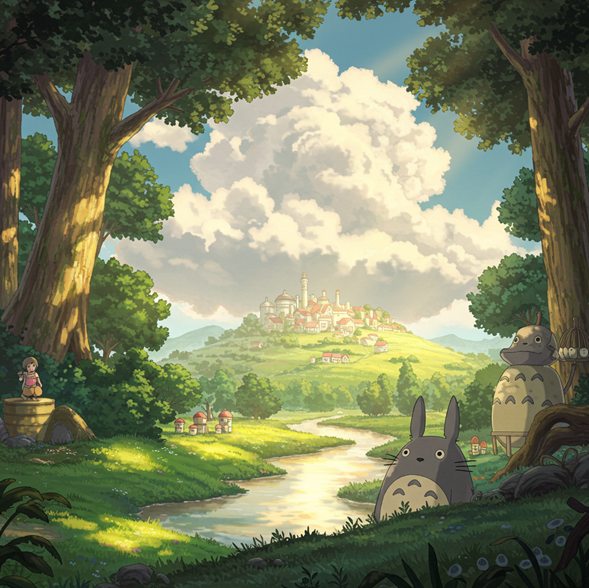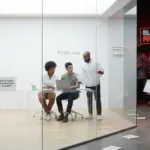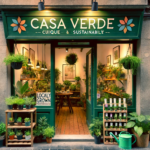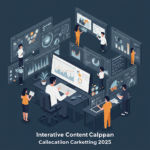1. Welcome to the visual future: The artistic revolution of AI
Throughout history, great technological leaps have been accompanied by cultural revolutions, and today we are witnessing an unprecedented visual transformation. The release of ChatGPT-4o by OpenAI not only set a new standard in natural language processing, but also brought with it a fascinating capability: the generation of highly stylized images, including those that evoke the magical and nostalgic world of Studio Ghibli. This ability is not limited to generic illustrations; We are talking about scenes full of emotion, soft textures, pastel color palettes and a visual narrative that transports the viewer to a poetic dimension. AI has ceased to be an auxiliary tool and has become a first-class creative collaborator.
2. The new canvas: ChatGPT-4o and its visual generation engine
The evolution of language models towards multimodal architectures has allowed ChatGPT-4o to integrate text, voice, vision and image into a single seamless experience. But what is really impressive is the quality of the images generated. Today, it is enough to write “a girl on a bicycle in the rain in Studio Ghibli style” to obtain a work with a melancholic atmosphere, precise reflections in puddles, and an aesthetic that seems straight out of “My Neighbor Totoro.” What used to take hours of manual illustration can now be achieved in seconds. For digital artists, designers and content creators, this represents an opportunity to iterate faster, experiment without fear of cost, and explore new visual narratives that were previously unviable due to lack of resources or time.
3. The change in the rules of the game for creatives and brands
Until recently, brands had to hire specialized designers or illustrators to achieve a personalized aesthetic. This involved a long process of brainstorming, sketches, revisions and deliveries. With ChatGPT-4o, this flow is fundamentally altered. Now, creative teams can generate moodboards, visual tests or even entire campaigns with a well-written prompt. This change does not seek to replace the artist, but rather to free him from mechanical work and allow him to focus on the strategic and conceptual. The role of the art director is evolving: it is no longer about creating each pixel, but about knowing how to communicate to the AI precisely what is wanted and then fine-tuning the results.
4. Studio Ghibli as an emotional reference: beyond aesthetics
Choosing the Studio Ghibli style is not a visual whim. This aesthetic has connected with generations due to its ability to transmit deep emotions, innocence, nostalgia and spirituality without the need for words. AI-generated images that emulate this style are not only beautiful; They are evocative. By including them in a visual strategy, brands achieve a direct emotional bridge with the audience. This phenomenon marks the beginning of a new era where campaigns do not appeal only to logic or sales, but to the construction of universes that the public wants to inhabit. It is no longer enough to show a product: you have to tell a story, generate an atmosphere, and now, thanks to AI, that is available to everyone.
5. How the visual strategy changes on social networks
Social networks are the most immediate showcase of any brand or project. With users scrolling through their feeds at high speed, an image needs to grab attention in seconds. By delivering cinema-quality, deeply emotional images, AI raises the bar for what is published. Now, a startup can show its values, its history or its worldview with a single AI-generated illustration. This changes the strategy completely: instead of focusing solely on frequency and format, brands must think about atmospheres, symbolism and visual consistency. Campaigns become more visually narrative and less commercial. It is a silent but powerful revolution.
6. The ethics behind AI-generated beauty
This new power comes with great responsibility. Being able to replicate art styles as recognizable as Studio Ghibli raises important ethical questions: are we paying homage or appropriating? Where does inspiration end and copy begin? Companies using these styles should do so with respect and transparency, ideally mentioning the reference or using the styles as a starting point to develop their own. AI has no ethics, but those of us who use it do. Therefore, the visual strategy must also include principles, not just aesthetics. Be honest about the use of AI, recognize sources of inspiration and use these tools to amplify the message, not to appropriate what others have built with years of effort.
7. The democratization of art and its implications
The ability to generate incredible images in seconds means that access to visual creation is no longer limited to those who know how to use complex tools like Photoshop or Procreate. This levels the playing field for small creators, entrepreneurs, and educators who can now visually compete with big brands. However, this democratization also brings saturation. The challenge will not be to generate beautiful images, but to generate relevant images, with purpose and emotional connection. In this new landscape, brands will have to find their visual voice, their own style, and use AI as an extension of their identity, not as a generic substitute.
8. Real examples: from campaigns to editorial covers
There are already brands that are exploring these possibilities. In Japan, an independent publisher launched a series of short stories accompanied by Ghibli-style AI-generated illustrations. On networks, fashion accounts have begun to generate dream outfits with fantasy scenarios. And in the educational sector, these images are being used to illustrate abstract concepts in a much more attractive way for students. AI is not only helping to sell more, but to communicate better. The visual strategy thus becomes a direct emotional language, where the audience no longer only sees, but feels and remembers.
9. What’s coming: new styles, new alliances, new rules
The Ghibli style is just the beginning. In the coming months we will see how AI learns to replicate styles from other iconic animation, painting and illustration houses. This will open the doors to unprecedented collaborations between brands and digital artists, and will also cause agencies to redesign their workflows. Whoever masters visual language and knows how to communicate with AI will be the one who leads. This is a new digital literacy, one where visual storytelling is the most valuable currency.
10. Conclusion: art is not replaced, it is transformed
Artificial intelligence did not come to displace art or artists, but to transform the way it is created and shared. The ability to generate images with an aesthetic sensibility as defined as that of Studio Ghibli is a gift… if used with purpose. The visual strategy of the future will be collaborative, emotional, ethical and deeply human, although powered by machines. It’s time to redefine what it means to create, and do it with your soul, even if the brush is digital.
What makes a brand unforgettable? Find out here Download the guide



